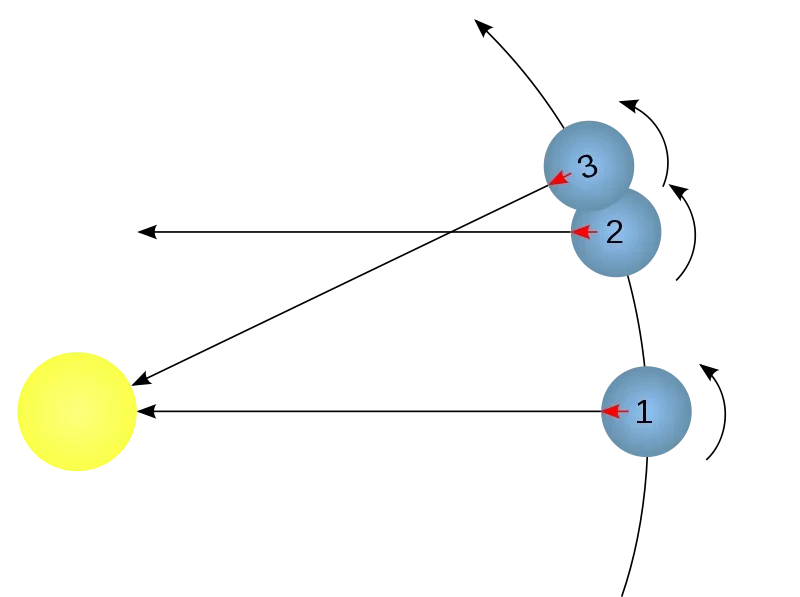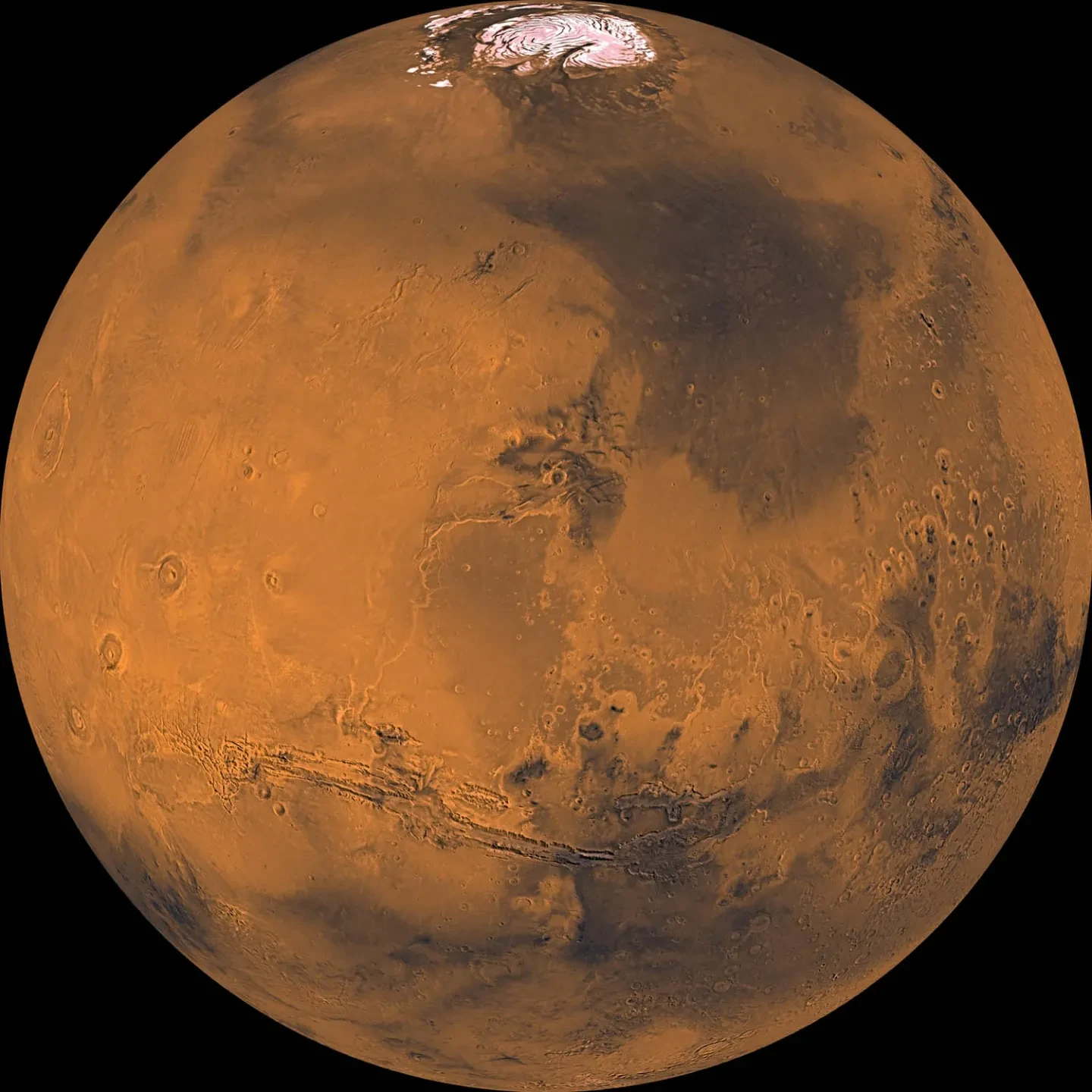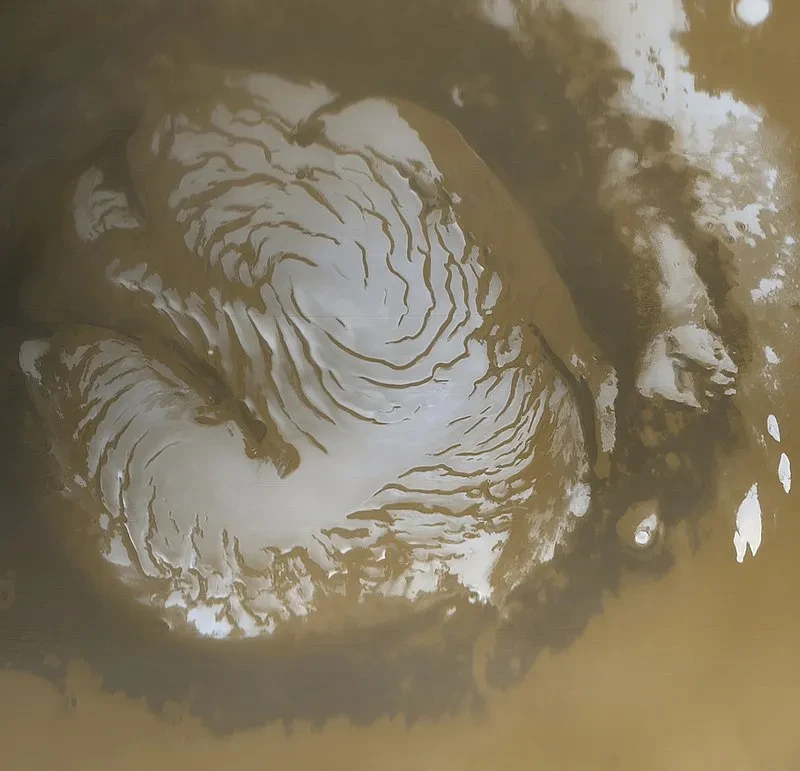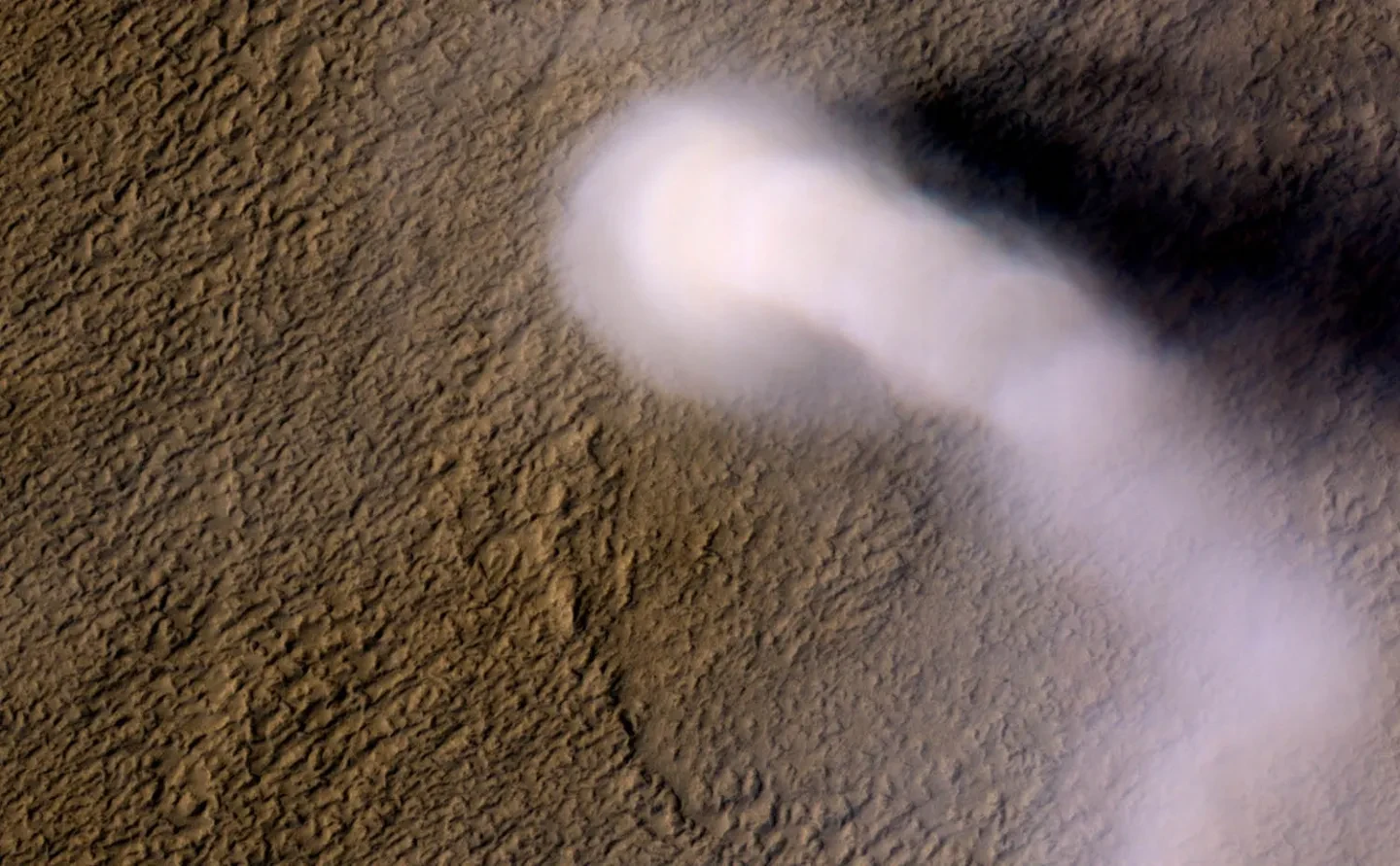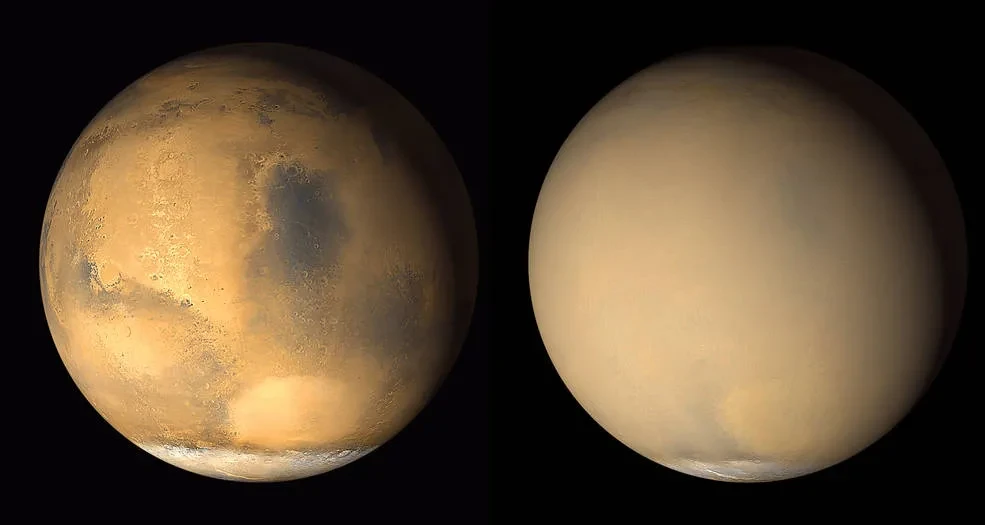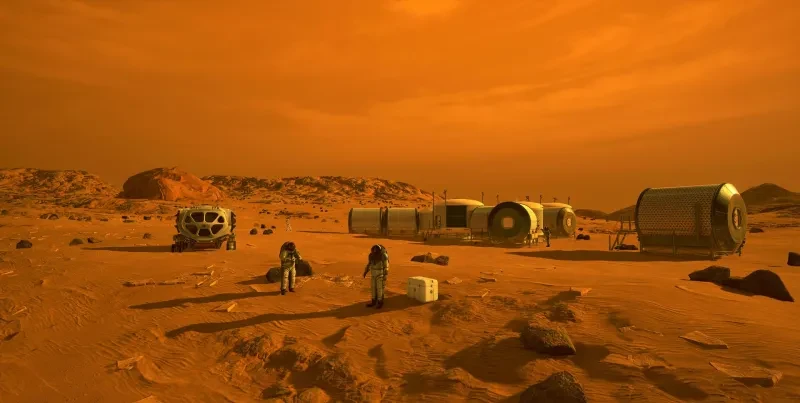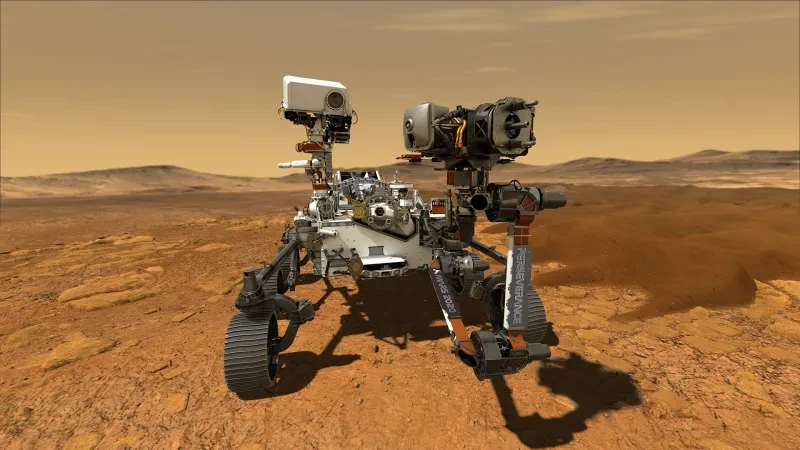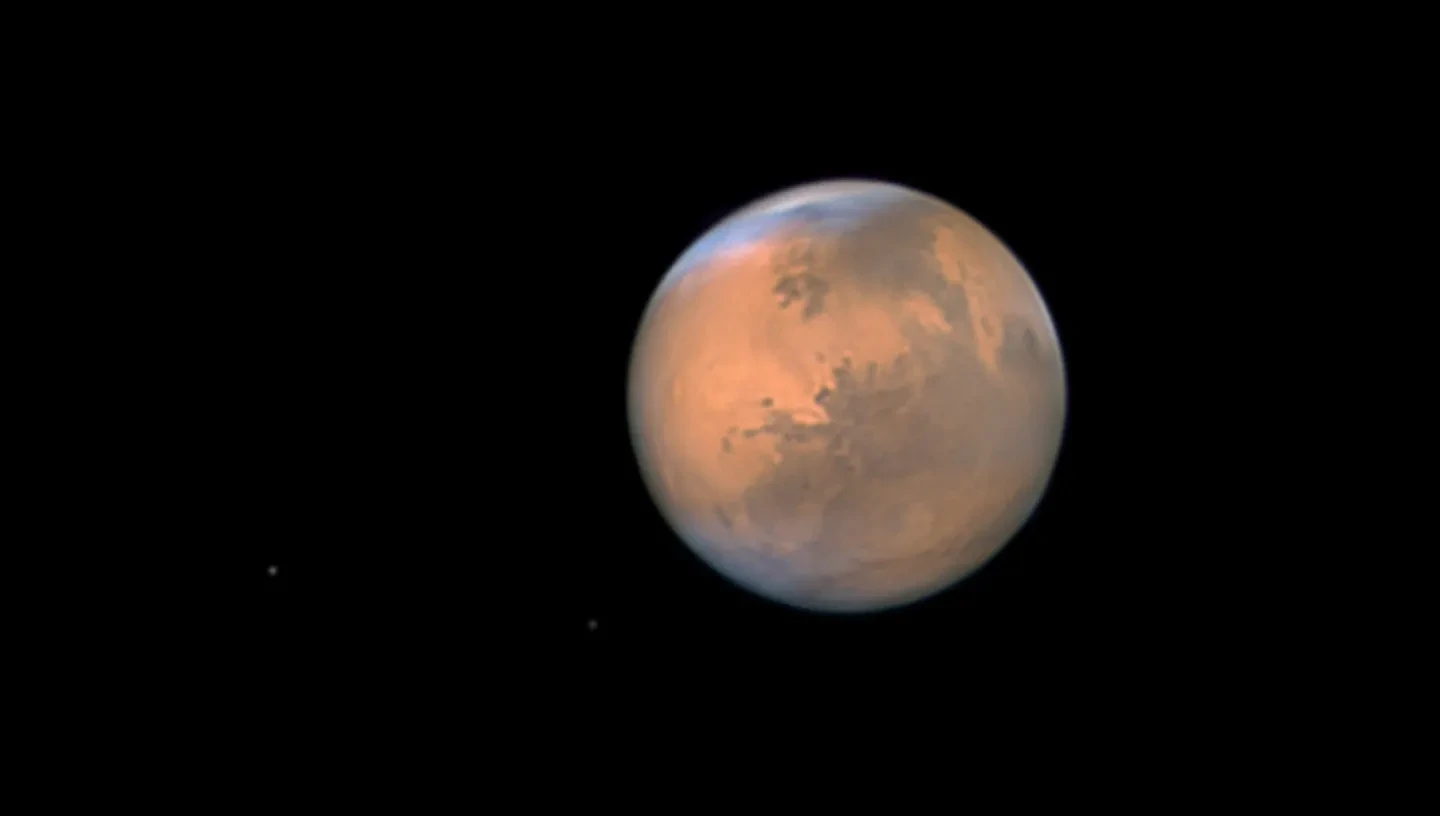
Mars is a planet with a very similar daily cycle to the Earth.
Its 'sidereal' day is 24 hours, 37 minutes and 22 seconds, and its solar day 24 hours, 39 minutes and 35 seconds.
A Martian day (referred to as “sol”) is therefore approximately 40 minutes longer than a day on Earth.
How do we define the length of a day?
We’re very accustomed to the daily cycle on our planet – the Earth spins anticlockwise on its axis, beginning the day with the Sun rising in the east and eventually setting in the west. That takes us into night and finally to a new day with the Sun rising once again.
However the length of a day can be defined in two ways – a sidereal day and a solar day.
What is a sidereal day?
The time it takes for a planet to spin once so that the stars appear in the same position again in the night sky is known as a sidereal day.
On the Earth that is 23 hours 56 minutes and 4 seconds. Although astronomers sometimes use the sidereal day as a passage of time, in our everyday lives we’re more familiar with the idea of a solar day.
What is a solar day?
This is the amount of time it takes for a planet to spin on its axis so that the Sun appears in the same position in the daytime sky (typically when the Sun is on the local meridian). For the Earth a solar day is 24 hours long on average.
A solar day is longer than a sidereal day because not only is the Earth spinning on its axis (anticlockwise) but it’s also orbiting around the Sun (anticlockwise).
That means it takes slightly longer each day – about four minutes – for the Sun to appear in the same part of the sky as it did the previous day. The 24 hour solar day is also considered an average because the Earth has an eccentric orbit around the Sun (it’s not a perfect circle). It doesn’t move at a constant speed throughout its orbit, and so the length of the solar day varies daily.
There are some planets with very short days like Jupiter. The length of a Jovian sidereal day is 9 hours, 55 minutes and 30 seconds.
Other planets have much longer days – Venus has a sidereal day of 243 days and 36 minutes. However Venus has retrograde motion so it spins in a clockwise direction, meaning its solar day (116 days and 18 hours) ends up being shorter than its sidereal day.
How long is a day and year on Mars?
Mars is a planet with a very similar daily cycle to the Earth. Its sidereal day is 24 hours, 37 minutes and 22 seconds, and its solar day 24 hours, 39 minutes and 35 seconds.
A Martian day (referred to as “sol”) is therefore approximately 40 minutes longer than a day on Earth.
It wouldn’t be too difficult to accustom ourselves to the cycle of a Martian day. But how would we have to adapt if we were seriously considering going to live on Mars?
The length of an Earth year is on average 365.25 days. We experience seasonal changes since the Earth’s axis is tilted (by 23.5 degrees).
Although the Earth has an eccentric orbit, its varying distance from the Sun throughout the year has little effect on the temperature compared to the effect of our planet’s axial tilt.
This is highlighted by the Earth-Sun distance being shorter in the winter season in the northern hemisphere and longer during the summer. Temperatures are generally higher in the summer, even though we're actually further from the Sun.
Since Mars is further from the Sun compared to the Earth, a Martian year is longer: 687 days. That’s just less than two Earth years.
Although you wouldn’t age any quicker, living on Mars you’d only be celebrating a birthday roughly every two years, since a birthday is marking another orbit around the Sun.
Mars’ axis is tilted by a similar amount to the Earth’s. Its 25 degree axial tilt means that Mars also experiences seasons.
However the eccentricity of Mars’ orbit around the Sun is more than five times that of the Earth’s, and so its varying distance from the Sun throughout the Martian years plays a large role in its seasonal cycle too.
What’s the weather like on Mars?
The average temperature on Mars is -60 degrees Centigrade. Seasonal changes take the Martian temperature from 20 degrees C at the equator during summer down to -125 degrees C at the poles in winter.
With the atmosphere of Mars being 100 times thinner than on the Earth, daily temperature fluctuations are also quite extreme. With no ‘thermal blanket’ to trap the Sun’s heat, a summer’s night on Mars could fall to -100 degrees C.
The mostly sub-zero conditions on Mars aren’t exactly ideal, but for the time that the temperatures on Mars do climb high enough, liquid water can flow on the surface. NASA’s Phoenix lander found frozen water in the form of ice at the northern polar ice caps of Mars in 2008; we now know that both of the polar ice caps have water ice.
Although it was not a total surprise to find water in a frozen form, the detection of ‘snow’ was.
Images and data from the Phoenix lander revealed water condensing in the atmosphere during the start of the Martian winter in the northern regions. Using pulsing laser, scientist detected its reflections off ice crystals and clouds just a few miles above the surface.
Before the snow reached the surface though, it vaporised into streaks called “virgae”. This snow along with the detection of calcium carbonate and clays in the soil was strong evidence for scientists to suggest that the Phoenix landing site (Green Valley in the northern region) may have had a warmer and wetter climate in the past since such minerals are only formed in the presence of liquid water on Earth.
Scientist had known for decades that frozen carbon dioxide existed at the southern polar ice cap of Mars. But just a few years after the Phoenix lander discoveries, the Mars Reconnaissance Orbiter revealed carbon dioxide snowfall at the southern polar region in 2012 – the first ever observation of this phenomenon in the Solar System.
More recently, surveys of the soil and the atmosphere have revealed a few more hidden mysteries. They were conducted by a number of orbiters and landers including the Mars Science Laboratory, the Mars Orbiter Mission, the Mars Atmosphere and Volatile Evolution probe along with the two currently active rovers, Opportunity and Curiosity.
Scientists have demonstrated that around 3.7 billion years ago, Mars had much more liquid water on its surface and a feasible atmosphere which was stripped away by the solar wind.
Is there any extreme weather on Mars?
Earth isn’t the only planet with extreme weather – in fact the other planets have some extremely riotous weather. Mars has 'dust devils' purging over its surface. Although most don’t pose a threat, they are comparable to tornadoes – vertical, rapidly rotating columns of air. Solar heat creates convection currents which drive the winds on Mars. Due to the dry and dusty conditions, freshly deposited dust can be pulled several miles high.
It doesn’t stop there. Mars often experiences dust storms on its surface too. Back in 1971 when the Mariner 9 orbiter arrived at Mars it was greeted by the Martian world covered in a haze. This global dust storm lasted for a month – only after it died down did the orbiter manage to send back images of the Martian surface below.
The Hubble Space telescope also spotted a dust storm on Mars in 2001 which appeared to die down before coming back with a vengeance to become the largest dust storm recorded on Mars in 25 years.
The huge amount of dust drawn up into the atmosphere caused the atmospheric temperature to increase by 30 degrees C – a global warming effect. Close up images from NASA’s Mars Global Surveyor orbiter showed the extent of the dusty haze that became distributed around the planet.
Weather on other planets isn’t much better. On Venus you’d experience sulphuric acid rain and temperatures high enough to melt lead. On Jupiter you’d find yourself in anti-cyclonic storms some raging for several centuries and larger in size than the Earth, like the Great Red Spot.
So next time you find yourself complaining about having a cold and harsh winter or a poor, wet or even a heatwave summer, just remember that it’s a lot better than the weather you might experience elsewhere in the Solar system!
Header image: Pathfinder © Tom Williams - shortlisted in Astronomy Photographer of the Year 2023 Planets, Comets and Asteroids category
